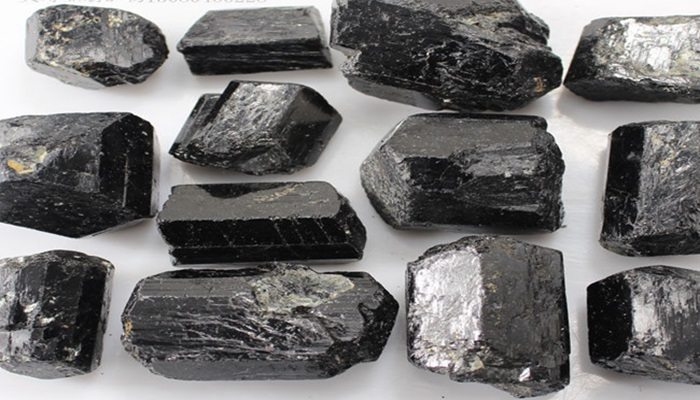When it comes to choosing gemstones for jewelry, healing, or spiritual practices, obsidian and tourmaline are two popular options. Both have unique properties and appeal, but which one is better? In this article, we’ll explore the differences between obsidian and tourmaline, their uses, and how to decide which gemstone is right for you.
What is Obsidian?
Obsidian is a natural volcanic glass formed when lava cools rapidly. It is typically black but can also appear in shades of brown, green, or even rainbow hues. Obsidian has been used for centuries in tools, weapons, and jewelry due to its sharp edges and glossy finish.
Properties of Obsidian
Color: Black, brown, green, or rainbow.
Hardness: 5-5.5 on the Mohs scale (relatively soft).
Luster: Glassy and shiny.
Transparency: Opaque.
Uses of Obsidian
Jewelry: Obsidian is often used in pendants, beads, and cabochons.
Healing: Believed to provide grounding and protection.
Spiritual Practices: Used for scrying and divination.
What is Tourmaline?
Tourmaline is a semi-precious gemstone known for its wide range of colors. It is a crystalline mineral that can be found in shades of pink, green, blue, black, and even multicolored varieties like watermelon tourmaline. Tourmaline is highly valued in jewelry and is also used for its metaphysical properties.
Properties of Tourmaline
Color: Wide range, including pink, green, blue, black, and multicolored.
Hardness: 7-7.5 on the Mohs scale (durable).
Luster: Vitreous to resinous.
Transparency: Transparent to opaque.
Uses of Tourmaline
Jewelry: Popular in rings, earrings, and necklaces due to its vibrant colors.
Healing: Believed to balance energy and promote emotional well-being.
Spiritual Practices: Used for protection and enhancing creativity.
Obsidian vs. Tourmaline: Key Differences
1. Appearance
Obsidian: Typically black with a glossy finish. It can have rainbow or sheen effects but is generally opaque.
Tourmaline: Comes in a variety of colors and can be transparent or opaque. Its vibrant hues make it a favorite for jewelry.
2. Durability
Obsidian: Softer and more prone to scratches and chips.
Tourmaline: Harder and more durable, making it suitable for everyday wear.
3. Metaphysical Properties
Obsidian: Known for grounding and protection. It is often used to absorb negative energy.
Tourmaline: Believed to balance energy and promote positivity. Different colors are associated with specific healing properties.
4. Price
Obsidian: Generally more affordable due to its abundance.
Tourmaline: Can be more expensive, especially for rare colors like Paraiba tourmaline.
Which is Better for Jewelry?
Obsidian in Jewelry
Obsidian’s sleek, black appearance makes it a popular choice for statement pieces. However, its softness means it requires careful handling. It is best suited for pendants, earrings, or beads rather than rings or bracelets that are more prone to damage.
Tourmaline in Jewelry
Tourmaline’s durability and wide range of colors make it a versatile gemstone for all types of jewelry. Its hardness ensures it can withstand daily wear, making it ideal for rings, bracelets, and necklaces.
Which is Better for Healing and Spiritual Practices?
Obsidian for Healing
Obsidian is often used for grounding and protection. It is believed to help release negative emotions and provide clarity. However, its intense energy may not be suitable for everyone.
Tourmaline for Healing
Tourmaline is known for its balancing properties. Different colors are associated with specific healing benefits, such as pink tourmaline for emotional healing and black tourmaline for protection.
How to Choose Between Obsidian and Tourmaline
Consider Your Needs
Jewelry: If you want a durable, colorful gemstone, tourmaline is the better choice. For bold, black pieces, obsidian is a great option.
Healing: If you need grounding and protection, obsidian may be more suitable. For balancing energy and emotional well-being, tourmaline is ideal.
Budget: Obsidian is more affordable, while tourmaline can be pricier, especially for rare varieties.
Caring for Obsidian and Tourmaline
Obsidian Care
- Avoid harsh chemicals and extreme temperatures.
- Clean with a soft cloth and mild soap.
- Store separately to prevent scratches.
Tourmaline Care
- Clean with warm, soapy water and a soft brush.
- Avoid ultrasonic cleaners for certain varieties.
- Store in a padded jewelry box to prevent damage.
Conclusion
Both obsidian and tourmaline have unique qualities that make them valuable in their own ways. Obsidian is ideal for those seeking grounding and protection, while tourmaline offers a wide range of colors and balancing properties. When choosing between the two, consider your needs, preferences, and budget. Whether you prefer the sleek elegance of obsidian or the vibrant beauty of tourmaline, both gemstones are excellent choices for jewelry, healing, and spiritual practices.
Related topic:
- Can Plaster and Black Tourmaline Necklaces Be Used as Gifts?
- How to Identify Quality in Gypsum and Black Tourmaline Necklaces?
- What Does a Black Tourmaline Crystal Do?


